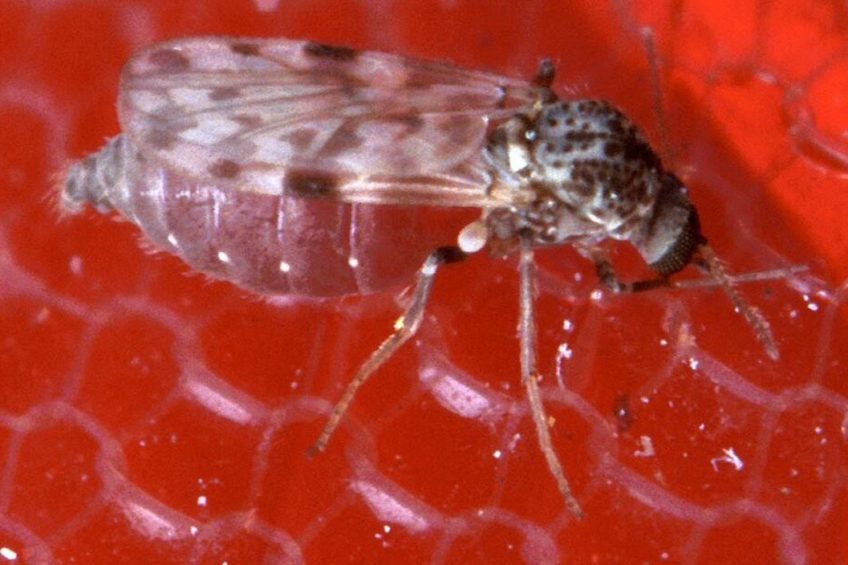Midges, mosquitoes and flies and their role in ASFv spread

That stable flies could theoretically transmit African Swine Fever virus under experimental conditions was already known, yet conclusions like those trigger curiosity. Could it be confirmed on larger farms too? And how about mosquitoes?
Stable flies and midges formed the key components of a Romanian study that was published in the EFSA Journal, a publication of the European Feed Safety Authority. The study briefly referred to earlier reports where the stable fly (Stomoxys calcitrans) was detected in various body parts for 3 days after infection.

In 2019, Pig Progress ran an article on Danish studies to the relationship of stable flies and ASFv
ASF virus in blood-feeding arthropods
The Romanian study was carried out by scientists from the University of Agricultural Sciences and Veterinary Medicine of Cluj-Napoca, the Romanian National Sanitary Veterinary and Food Safety Authority and the Romanian Institute for Diagnosis and Animal Health. The team noted that no field evidence had yet been found demonstrating the presence of viral DNA in blood‐feeding arthropods, which is why they visited 30 Romanian farms positive for ASF and took samples.
On 9 farms, they wrote, pigs were still present at the time of sampling, whereas on the other outbreak farms pigs were culled maximum 24 hours prior to sampling. The team mostly caught Culicoides species (midges) and the abovementioned S. calcitrans (stable flies).
Half of the pools tested positive for ASFv
The team prepared 119 pools from 20 farms with the midges, and 81 from 15 farms with the stable flies. Just over half of the pools (50.5%) tested positive for DNA of African Swine Fever virus. Worth noting, the researchers stated, was that the prevalence of infected pools was the highest in commercial farms.
In addition, the proportion of ASFv DNA positive pools in S. calcitrans (62.96%) was significantly higher than in Culicoides species (42.02%). The team found positive pools in 55% of the locations for the midges and in 86.7% for stable flies. They added that the prevalence was significantly higher in farms where sampling was done when pigs were still present compared to farms where the pigs were already culled.

Midges and stable flies as ASFv vectors
In conclusion, the researchers wrote, the study demonstrates that the most common vectors found around pig farms are midges (Culicoides species) and stable flies (Stomoxys). The ASFv DNA could be detected in both groups with higher probability in commercial farms and if tested when pigs are present at the time of sampling.
Nevertheless, they said, despite the positive findings of ASFv DNA, the actual role in ASFv mechanical transmission remains to be clarified.

Track the movement of African Swine Fever For everything you need to know about ASF, from the latest outbreaks to controls stay up to-date…
How about mosquitoes and ASFv?
The role of mosquitoes was put to the test in a recent Chinese trial, which zoomed in on the question whether or not mosquitoes could play a role as mechanical vector. Scientists of Yangzhou University published an article about this topic in the peer-reviewed title BMC Veterinary Research.
For that, the scientists mainly focused on the species Culex pipiens pallens – a Latin mouthful to refer to the common house mosquito, which is found all over the planet. Until now it was simply unknown whether or not African Swine Fever could be transferred by mosquitoes. After all, they are known as vectors for other viruses.

Detection remains negative for ASFv
In the study, the scientists performed a qPCR analysis on mosquitoes from 5 pig farms with ASF virus (ASFv). After an analysis in 463 mosquitoes the team reported negative cycle threshold (CT) values, and detection remained negative after mixing samples from all 5 pig farms.
In other words, they concluded, mosquitoes appear unlikely to transmit ASFv and would pose little threat to pig farms.
The Romanian study in the EFSA Journal was written by O.M. Balmoș, C.D. Cazan, A.M. Ionică, A. Ungur and A.D. Mihalca, University of Agricultural Sciences and Veterinary Medicine of Cluj-Napoca, Romania; A. Supeanu, National Sanitary Veterinary and Food Safety Authority, Bucharest, Romania; P. Tamba, M. Motiu, F.A. Manita, B.C. Ancuceanu and F. Bărbuceanu, Institute for Diagnosis and Animal Health, Bucharest, Romania.
The Chinese study in BMC Veterinary Research was carried out by Weiyun Qin, Zhongcheng Gao, Shenglong Wu and Wenbin Bao, Yangzhou University, China.











